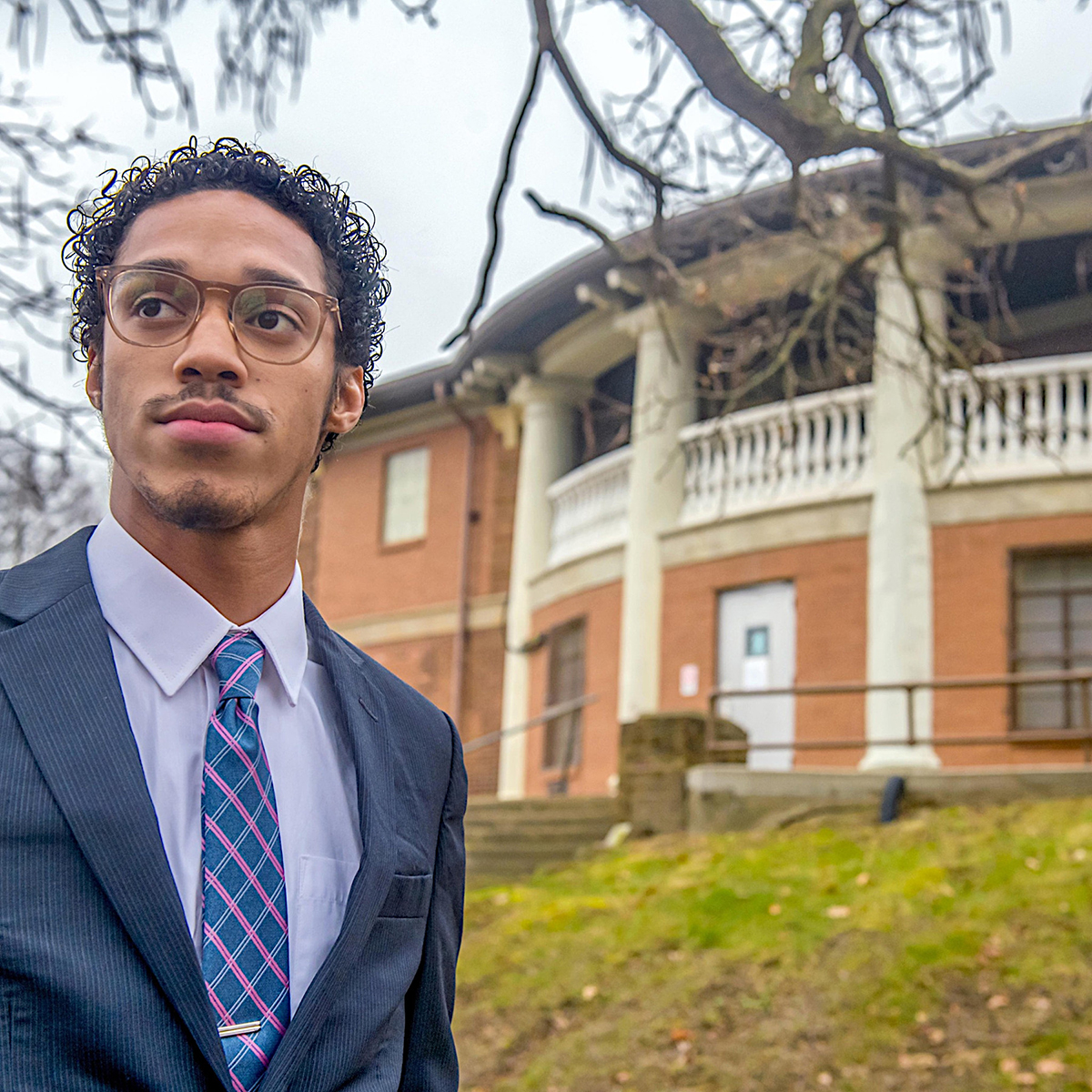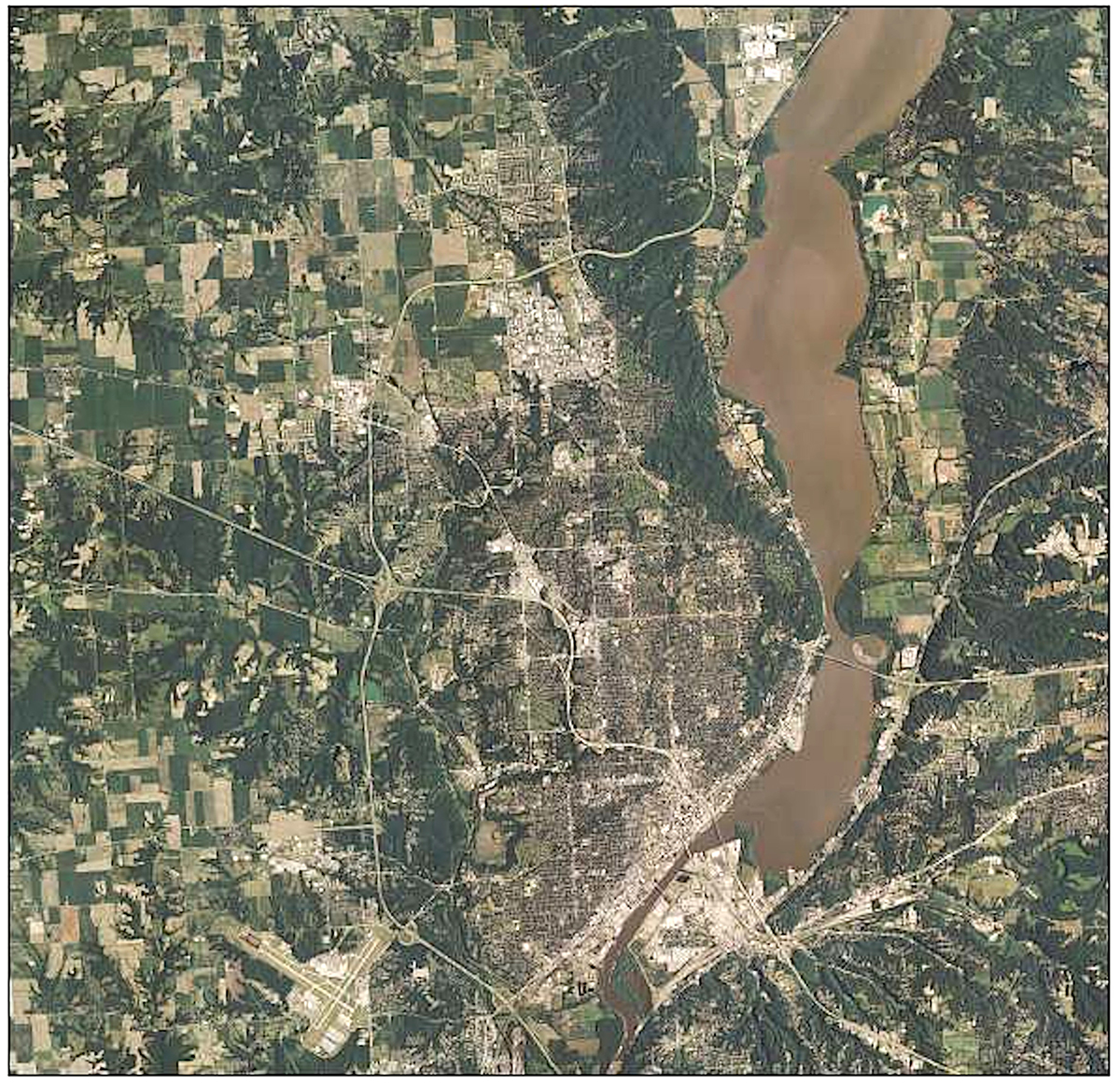
Peoria Park District Trustee Alex Sierra is spearheading efforts to improve quality of life with urban forestry.
The prime time when trees were center stage passed with fall’s spectacular colors gone or muted into stands of dark-brown red oaks. But forests in the city may yet be in the wings, awaiting their cue.
There are initiatives to improve Peoria’s timber, enhancing the city’s appearance, to be sure, but much more.
And funding will be there.
Cities and states across the country are starting to see trees as a key part of critical infrastructure.
“We’re on a trajectory of meteoric growth for urban forestry,” said Ben Thompson, manager of the urban and community forestry program at Washington state’s Department of Natural Resources. “All of a sudden everyone’s passionate about this.”
Nationwide, more than 130 million acres could be reforested, according to research by the nonprofit Nature Conservancy, which counted land formerly used for farming and acres where trees were lost to wildfires.
Locally, the Peoria Urban Forestry Advisory Board and the Peoria Park District are discussing possibilities for increasing local trees — and why that matters.
When trees are in and around residential areas, such green spaces create neighborhoods with less violence and fewer property crimes, places where neighbors tend to support and protect one another, according to scientists at the Human-Environment Research Laboratory of the University of Illinois at Urbana-Champaign.
“Time spent in natural surroundings relieves mental fatigue, which in turn relieves inattentiveness, irritability and impulsivity, recognized by psychologists as precursors to violence,” says their report, “How Cities Use Parks to Create Safer Neighborhoods,” published by the American Planning Association.
“Green spaces also support frequent, casual contact among neighbors,” it continues. “This leads to the formation of neighborhood social ties, the building blocks of strong, secure neighborhoods.”
Large swaths of Peoria, especially along the river from Averyville to Bartonville, have few spaces where construction or development would be controlled to lead to green rehabilitation generally and especially a restoration of urban forests.“There is no protected space within the Southern district,” said Peoria Park District Trustee Alex Sierra. “I want everyone to keep in mind that urban forestry is more than just trees. The recent project led by our Board, introduced by myself, positively contributes to our global environmental crisis, while improving quality of life and safety for our residents and patrons.”
Historically, the City has parti-
cipated in related ventures, such as a proposed tree-lined route from the airport to downtown, but that was decades ago. More recently, there was Well Farm at Voris Field in 2017-18, a commnuity garden a few blocks west of Dozer Park that also had another, practical function.
That project originally “was driven by our (now-defunct) Innovation Team [which] partnered with Fresh Coast Capital (later renamed Green Print Partners) and the now-defunct Gifts in the Moment group to establish an area that would be used for stormwater management,” said City spokeswoman Stacy Peterson. “The Well Farm was comprised of native plants, bioswales, and some trees that could be considered under the definition of ‘urban forestry.’
“The Well Farm is still functioning as a stormwater management feature and has been regularly monitored,” she contined. “So while the urban agriculture piece hasn’t been maintained, the stormwater management feature has worked.”
Building blocks envisioned by Sierra and others aren’t necessarily imminent in Peoria. “There are no plans for another large tree planting like the Well Farm in the near future,” said Andrea Klopfenstein, Assistant Public Works Director. “Operations plants trees throughout the city on a regular basis. Engineering is looking at native plantings at Public Works, the Well Farm, and Orange Prairie in the next few years.”
Klopfenstein also said the Well Farm location will be turned into a native prairie in future years, as budgets allows.
That could change with renewed interest — and new money. “The City of Peoria and the Department of Public Works are looking at expanding native plantings throughout the City,” said City of Peoria spokesman Nick McMillion. “Any opportunity or space that becomes available to expand the City’s green footprint will be utilized, which will include the development of areas of native plantings, the continued effort to plant new trees, and to maintain the mature canopy throughout the entire City. The opportunity to advance green spaces is an ongoing effort with multiple routes being explored and considered.”
Five ways investing in public spaces reduces violence and crime
New funding is available through federal measures such as the Inflation Reducation Act and the bipartisan infrastructure package, which together provide for billions of dollars to plant trees in underserved neighborhoods as well as reforesting millions of acres if thin timber or barren land.
The Inflation Reduction Act alone has $1.5 billion for the U.S. Forest Service’s Urban and Community Forestry Program, which supports widespread efforts in big cities and small towns.
Various federal agencies will handle the distribution of the funds, some of which will entail competitive grants and some direct funding to states.
“As an advisory board, [the] Peoria Urban Forestry Advisory Board itself would not seek additional funding,” McMillion said. “If federal dollars do become available, then the City in conjunction with the Peoria Park District would work with one another to expand the funding for the goals and mission of PUFAB.
“Available grants and funding opportunities will be reviewed as they become attainable.”
Some areas are hoping to restore urban forests decimated by disease such as Dutch Elm Disease or pests such as the emerald ash borer. Other places also imagine not only reducing violence and increasing property values, but expanding ways to help the environment.
Climate change has contributed to more heat waves, flooding and severe weather nationwide, and some leaders see trees as part of a solution. Neighborhoods with tree cover — shade — are much cooler than thinly covered or exposed areas called “heat islands,” which can affect human health and utility bills. Also, more trees absorbing carbon dioxide and releasing oxygen means more carbon can be sequestered, creating a “green infrastructure” in cities.
Naturally, as with many ambitious programs, some obstacles are foreseen, such as “where will all the trees come from?” asked Danielle Okst, director of policy with the Council of Western States Foresters.
There are limits to the tree-nursery system, which has seen some businesses close. Also, like many industries, there’s a labor shortage in forestry.
However, if forestry companies improve pay and provide on-site housing like the Civilian Conservation Corps did in the 1930s, they could attract applicants, according to Matthew Aghai, General Manager at the Silvaseed Company in Roy, Wash. “Having a mission and fair compensation is the bare minimum,” he told Stateline news service.
Whether strengthening nurseries, engaging citizens or tapping available dollars, there seems to be an optimism reminiscent of teacher, poet and suffragette Lucy Larcom’s line, “He who plants a tree plants a hope.”
In Peoria, Sierra said, “I value the abundance of resources available to make urban-development investments. It is a good scenario to have so many resources to support our work and turn our ideas into reality.”

